Previously, we have talked about some of the problems we were having with our HF rotor, see HF Rotor Woes of 2020 part 1: it’s dead, Jim. At this point, we concluded that the rotor was broken and needed to be replaced in its entirety. Winter was also approaching fast, and we needed to get things done before the frost set in. Due to the weather forecast, we decided to go through with the operation on the last weekend of October. Sunny weather, a bit chilly, but not too much wind for most of the day.
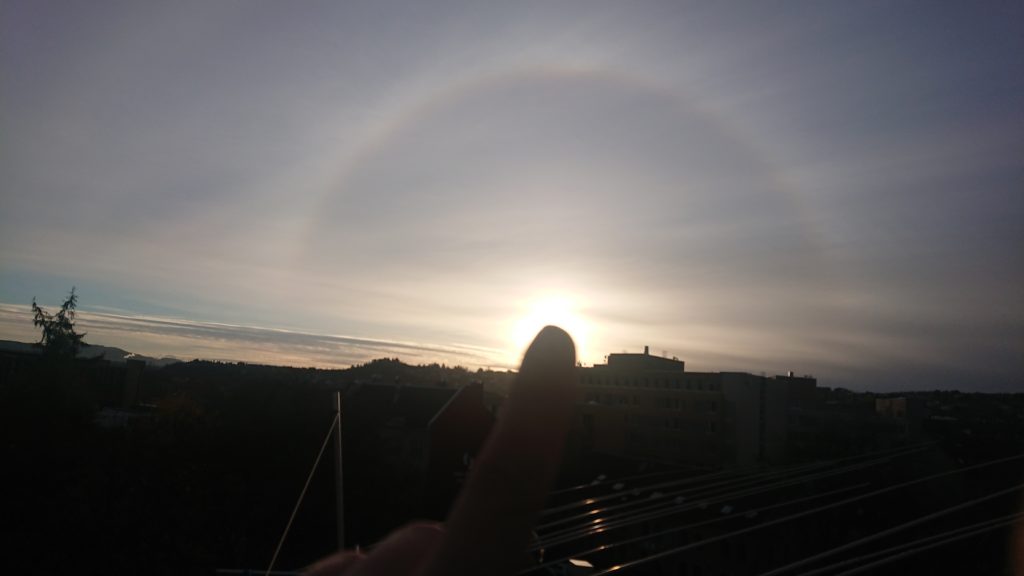
We started the operation in the early morning to get the most out of the day. The first thing we needed to do was to turn the antenna around to align the HF Yagi with the 40m dipole. This is typically an operation you would use the rotor for, but due to our situation, we had to improvise instead. Our solution was to throw a rope across the back of the Yagi and haul it around.
Once the antennas were aligned, the Yagi was flipped on its side and the mast was lowered as usual. We had to loosen the mast and to make sure it was stable during the process, so we strapped another pipe to it at several points. The mast was then easily pulled out of the non-functioning rotor, and the rotor was free to be replaced with our other one.
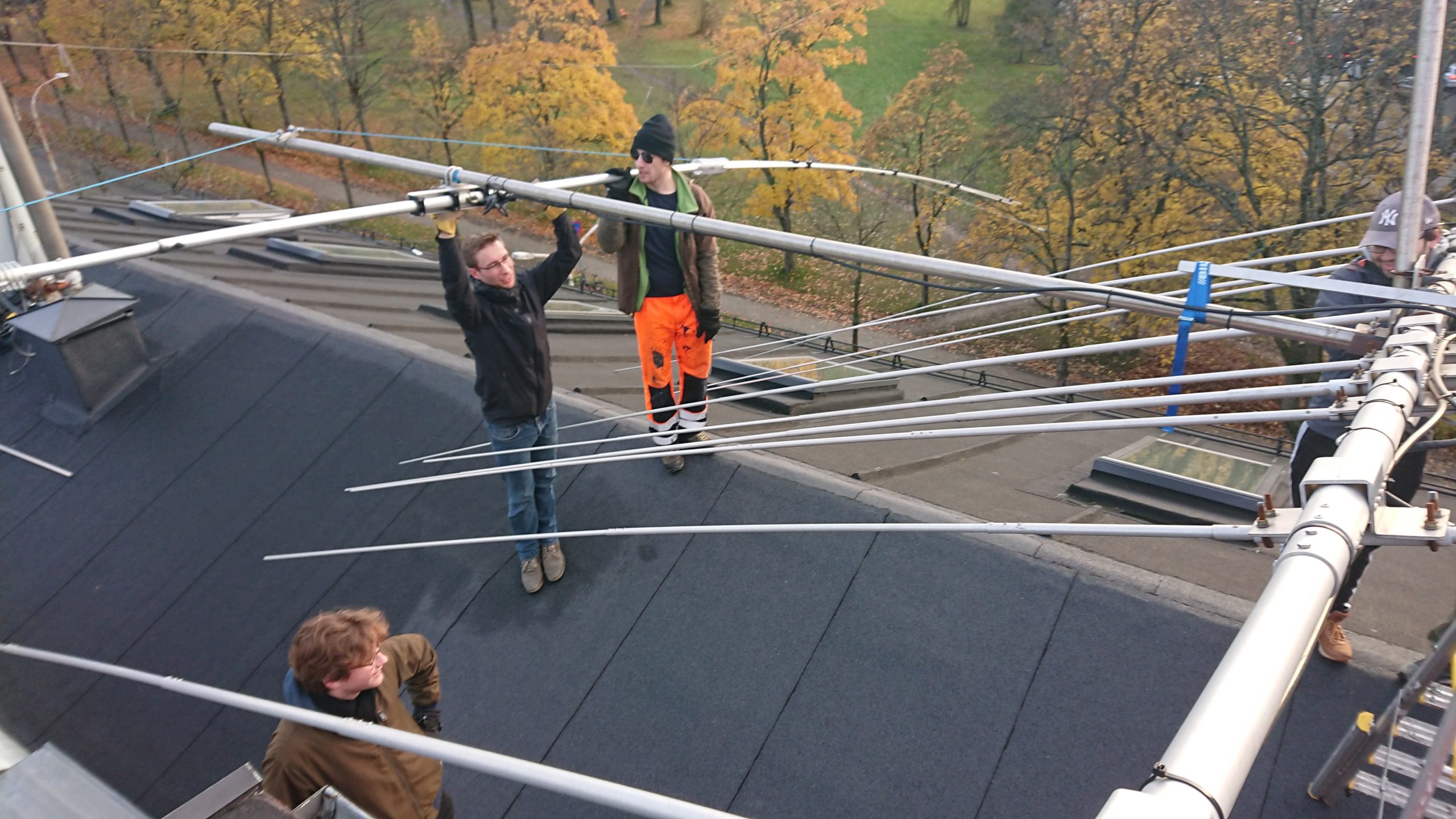
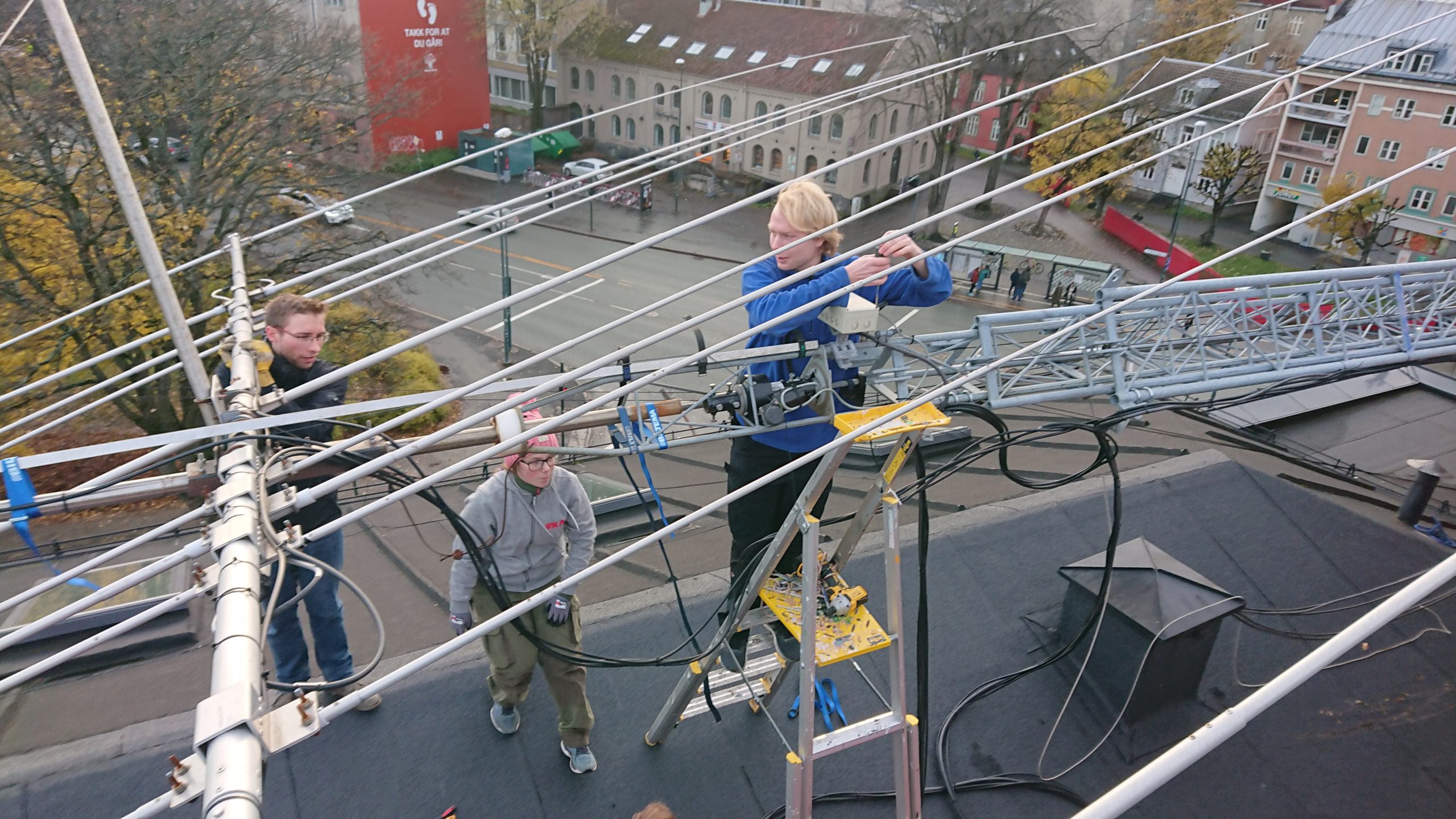
After hooking it up and verifying that the new rotor was indeed turning, we decided to go over and check the rest of the antenna. Things didn’t look too bad, so we hoisted it back up as it was. At this point, the wind was picking up quite a bit, and it was with great courage that LB4FI climbed up and flipped the antenna back to its proper orientation. The new safety harness was really nice to have here.
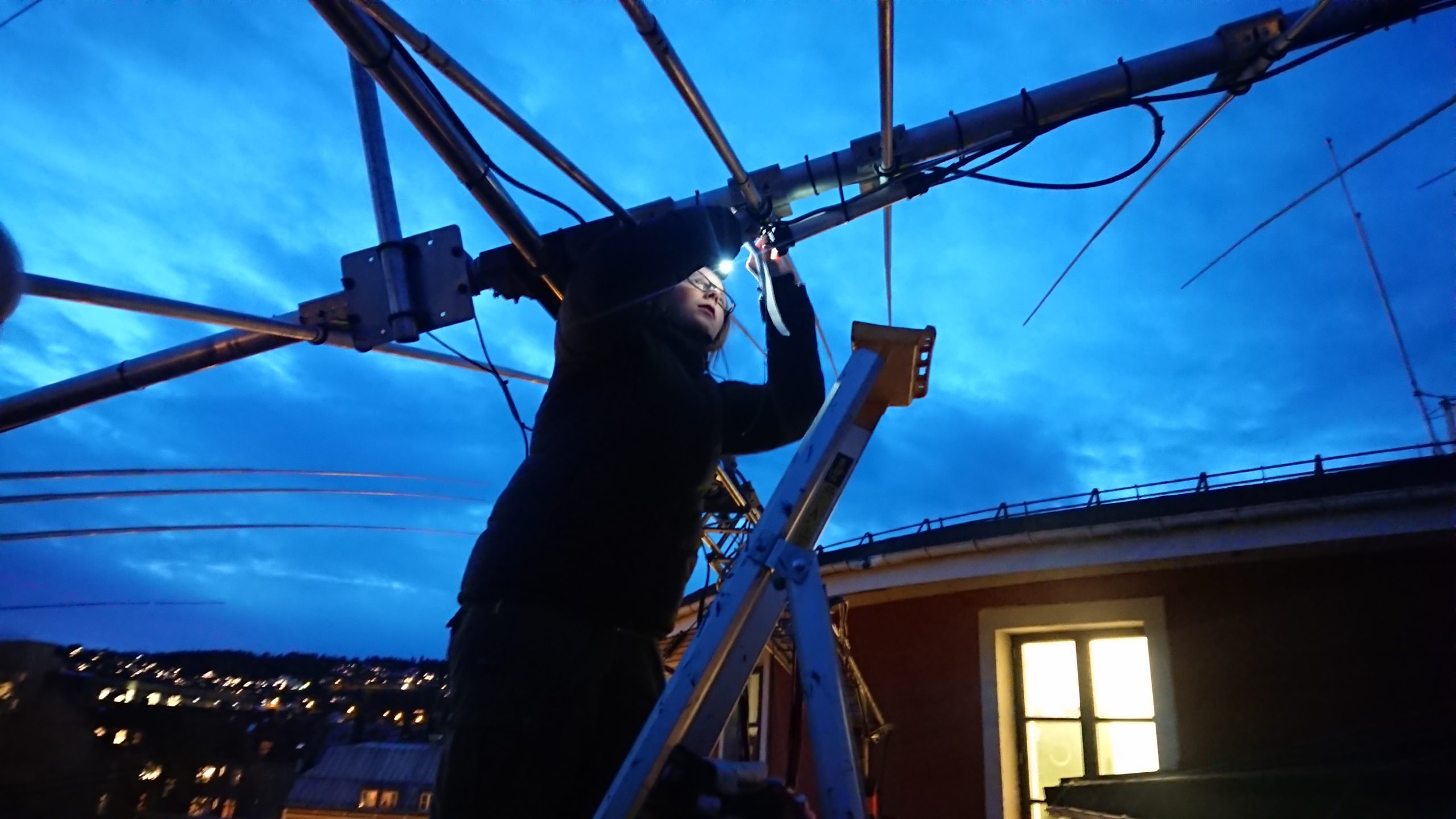
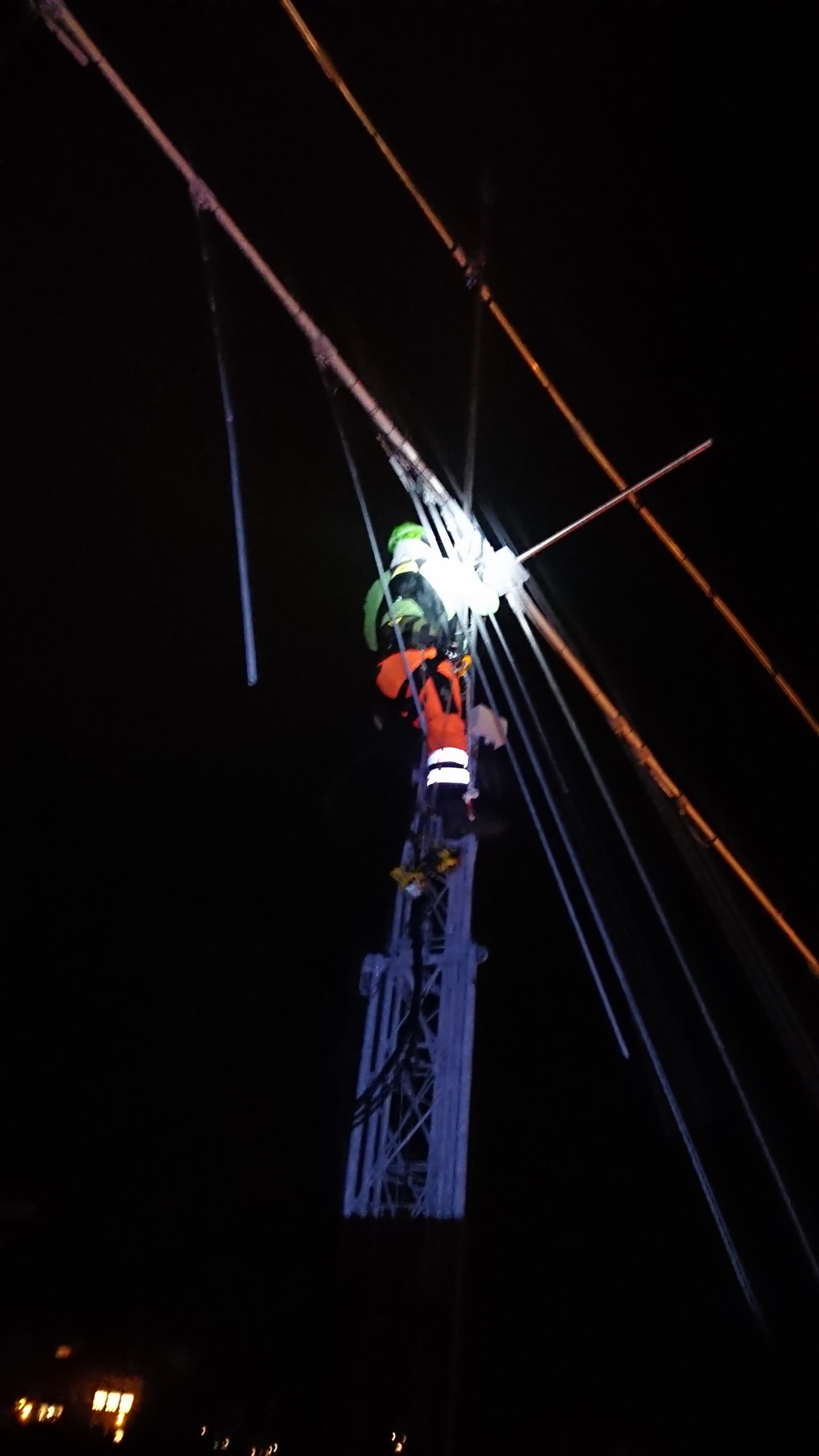
At the same time as the antenna work was proceeding, the old rotor was investigated in our workshop. It was quite the sight to behold, showing clear signs of years of use and wear. There was water and corrosion in the sealed gearbox, but most notably the entire front cap of the motor was covered with powdery white oxide. When we removed the cap and applied power, there was some movement, but as soon as the top cap was put back and fastened the motor would not move anymore. We have mentioned this in the past, but the hostility of our local weather cannot be overstated when it comes to outdoor equipment around here.
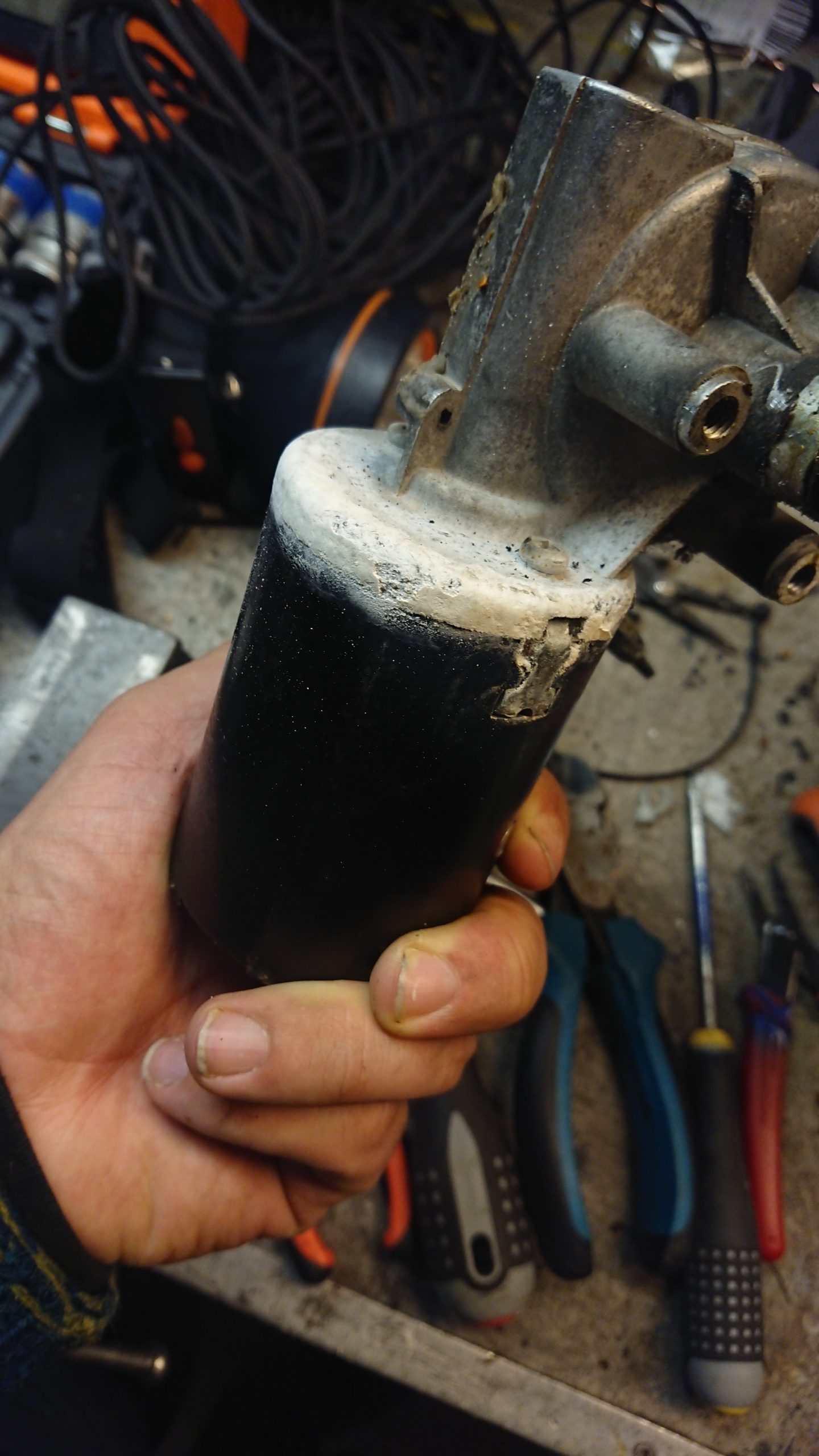
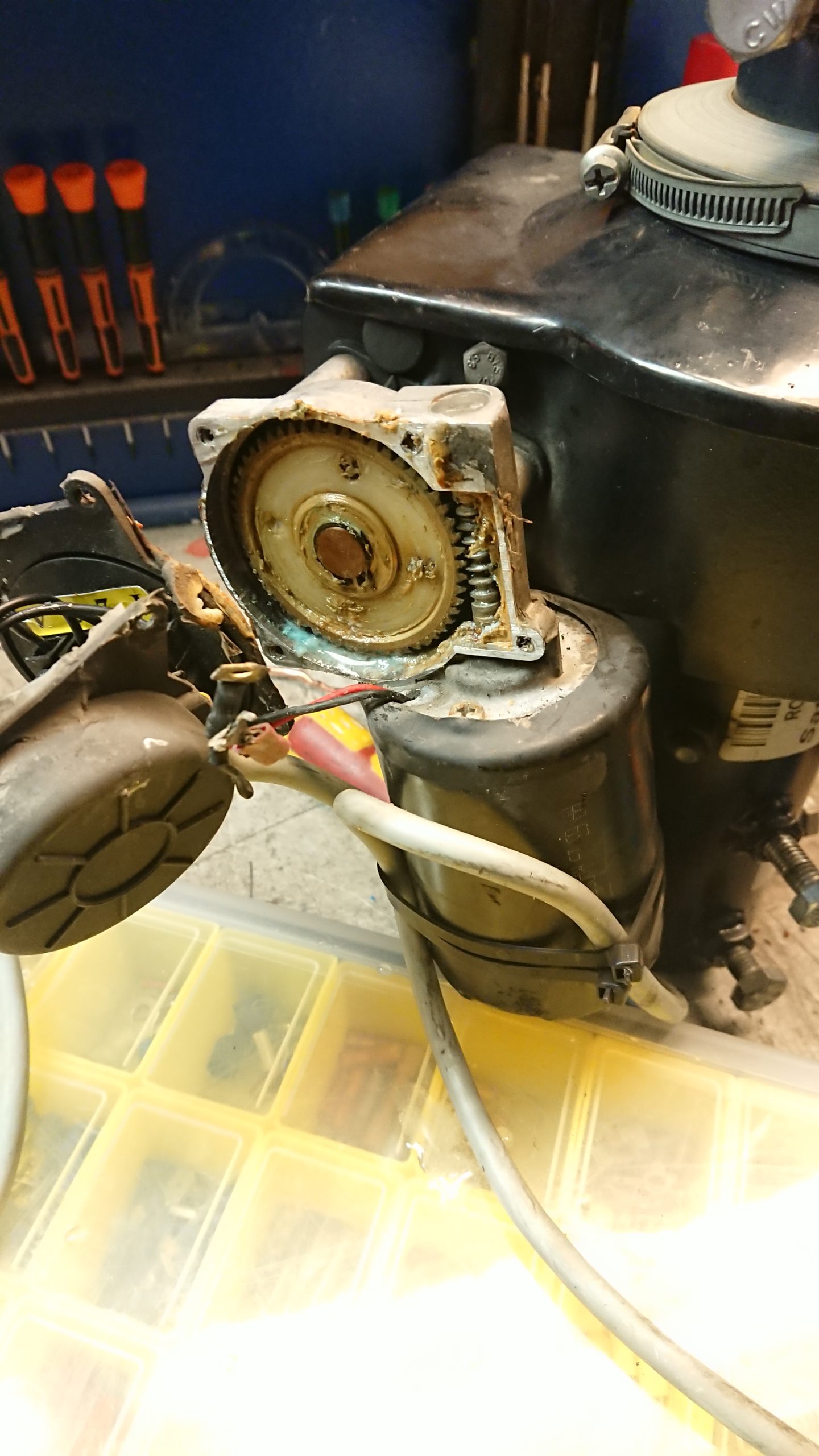
However, this was not the happy ending we were hoping for. When testing the new rotor the following day, it moved, but still not all the way around. Our initial assumption was that this was caused by the mast being fastened off-center to the rotor. But even after finer adjustment and centering, it still didn’t work as expected. With November came bad weather and frost, so more troubleshooting had to wait until the spring. In any way, we were glad there was some movement in the beam now at least.
Please be like our antennas and stay tuned!
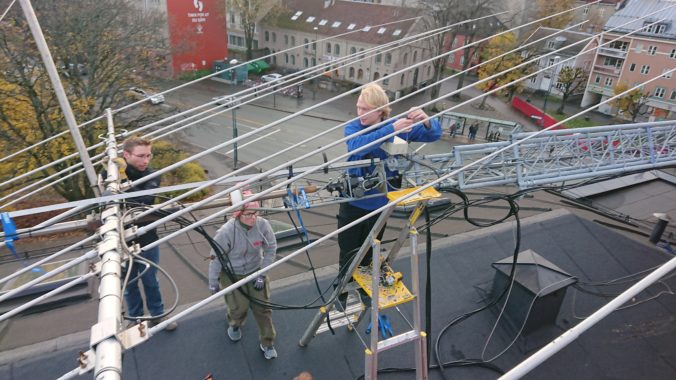

Leave a Reply